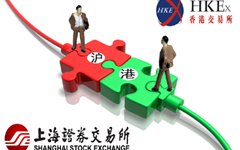Cross-border stock program offers change at the margin
By Oswald Chan (China Daily) Updated: 2014-10-15 09:17In Hong Kong, it is the opposite: Overseas institutions dominate turnover, accounting for 60 percent, and retail investors (mainly local residents) contribute 20 percent.
According to a spokesman for HKEx, mainland investors will not be allowed to engage in short-selling and margin trading of Hong Kong-listed shares at the start of Stock Connect.
|
 |
| Shanghai-HK Stock Connect: All you need to know |
|
 |
| 'Through train' set to green-light new system |
"I predict short-selling and margin-financing activity will emerge in the southbound direction because the Hong Kong market offers more sophisticated derivative products such as callable bull/bear contracts issued by investment banks," Kingston Securities Research Director Dickie Wong said.
Shum added that overseas institutions are familiar with short-selling in Hong Kong to generate profits, in addition to the traditional buy-and-hold strategy.
In Hong Kong, short-selling is increasingly contributing more to total market turnover. According to Securities and Futures Commission data released in July, average daily short-selling turnover from January to May was HK$6.6 billion ($851 million), which was 10.1 percent of total turnover.
The proportion was 9.8 percent for all of 2013 and 9 percent in 2012. The SFC's position on short-selling is that it does not increase volatility but rather is a legitimate trading and hedging tool.
Some analysts disagree.
"Allowing short-selling and margin lending in the pilot program will inject more risks. The central government aims to enhance reciprocal participation of mainland and Hong Kong share investors through the Stock Connect program. It does not want, at the current stage, to increase market volatility," said Castor Pang, head of research at Core Pacific-Yamaichi.
FACT BOX
Short-selling
Short-selling involves selling securities an investor does not own but promises to deliver. Such an investor "borrows" those shares from another party. When the shares are sold, the proceeds are credited to the account of the short-seller, who must then buy the same number of shares on the market. That is called "covering" the transaction. If the price drops, short-sellers can buy back the stock at the lower price and make a profit on the difference. The risk is that the price will rise, and in that case, the short-seller must buy the shares back at the higher price and lose money.
Margin trading
Margin trading involves buying shares with funds borrowed from a securities broker. An investor makes a cash down payment (margin) to the broker and can then buy shares worth more than the cash amount. It's essentially a form of leverage. The broker charges interest on the loan, as well as transaction fees. If the stock price rises, the investor's profits are multiplied. And the losses are multiplied if the stock price falls.
- China firm eyes quick approval of drug to cure Ebola
- Autumn scenery of West Lake in Hangzhou
- CICC chief steps down from post
- Flower business in Yunnan takes up 70% market in China
- Commercial real estate gets domestic power up
- Top 10 richest real estate tycoons in China
- China's logistics growth further slows in first 8 months
- Anta eyes China No 1 through NBA partnership















